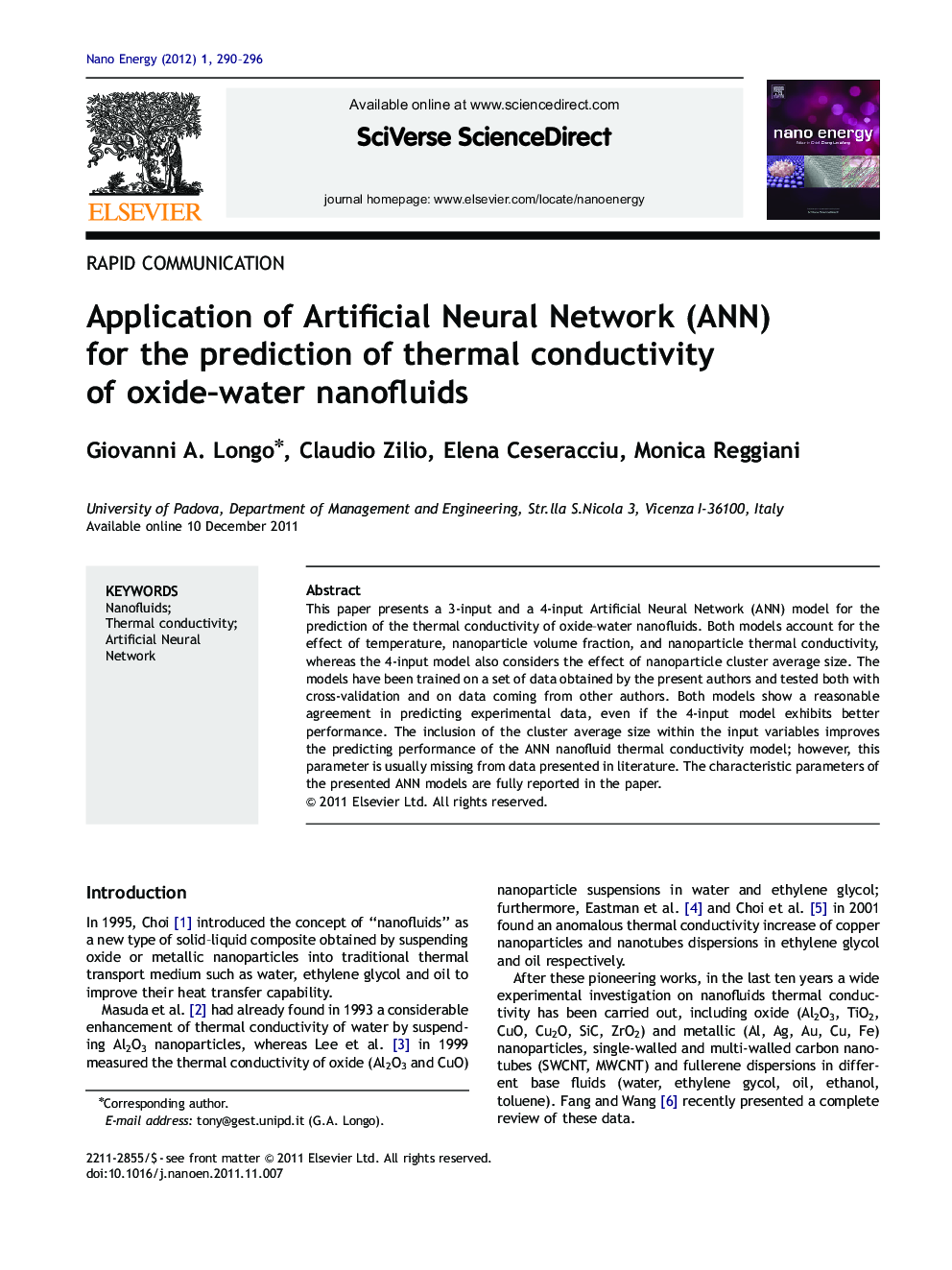| کد مقاله | کد نشریه | سال انتشار | مقاله انگلیسی | نسخه تمام متن |
|---|---|---|---|---|
| 1557907 | 999255 | 2012 | 7 صفحه PDF | دانلود رایگان |

This paper presents a 3-input and a 4-input Artificial Neural Network (ANN) model for the prediction of the thermal conductivity of oxide–water nanofluids. Both models account for the effect of temperature, nanoparticle volume fraction, and nanoparticle thermal conductivity, whereas the 4-input model also considers the effect of nanoparticle cluster average size. The models have been trained on a set of data obtained by the present authors and tested both with cross-validation and on data coming from other authors. Both models show a reasonable agreement in predicting experimental data, even if the 4-input model exhibits better performance. The inclusion of the cluster average size within the input variables improves the predicting performance of the ANN nanofluid thermal conductivity model; however, this parameter is usually missing from data presented in literature. The characteristic parameters of the presented ANN models are fully reported in the paper.
Figure optionsDownload as PowerPoint slideHighlights
► This paper presents two ANN models for the prediction of nanofluid thermal conductivity.
► The models consider temperature, volume fraction, cluster size, particle thermal conductivity.
► The models show a reasonable agreement in predicting experimental data.
► The characteristic parameters of the ANN models are fully reported.
Journal: Nano Energy - Volume 1, Issue 2, March 2012, Pages 290–296